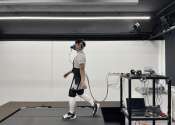Body-monitoring tech trend comes with concerns
A ring shimmers on display at the Consumer Electronics Show, but this is no mere piece of jewelry—it's packed with sensors capable of detecting body temperature, respiration and much more.
Jan 6, 2022
0
122









